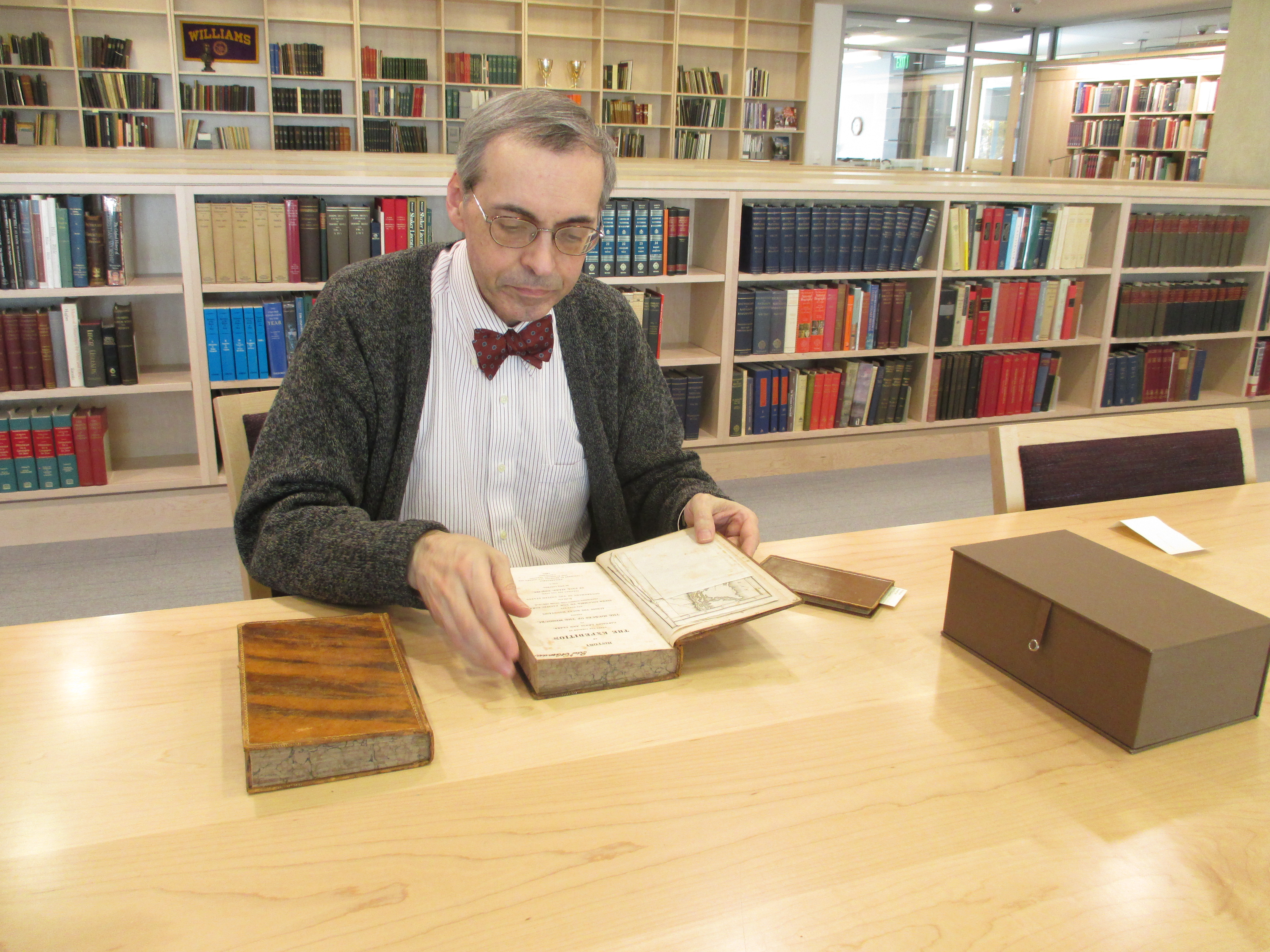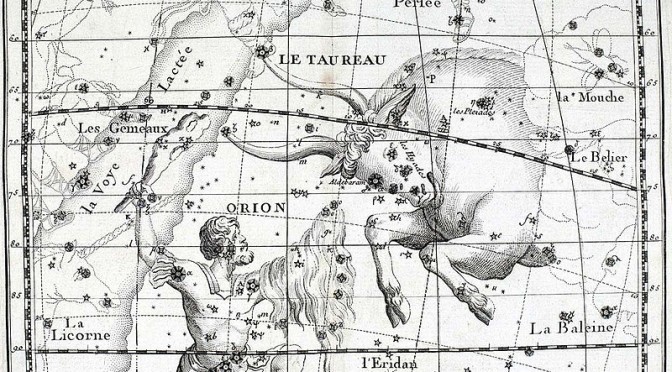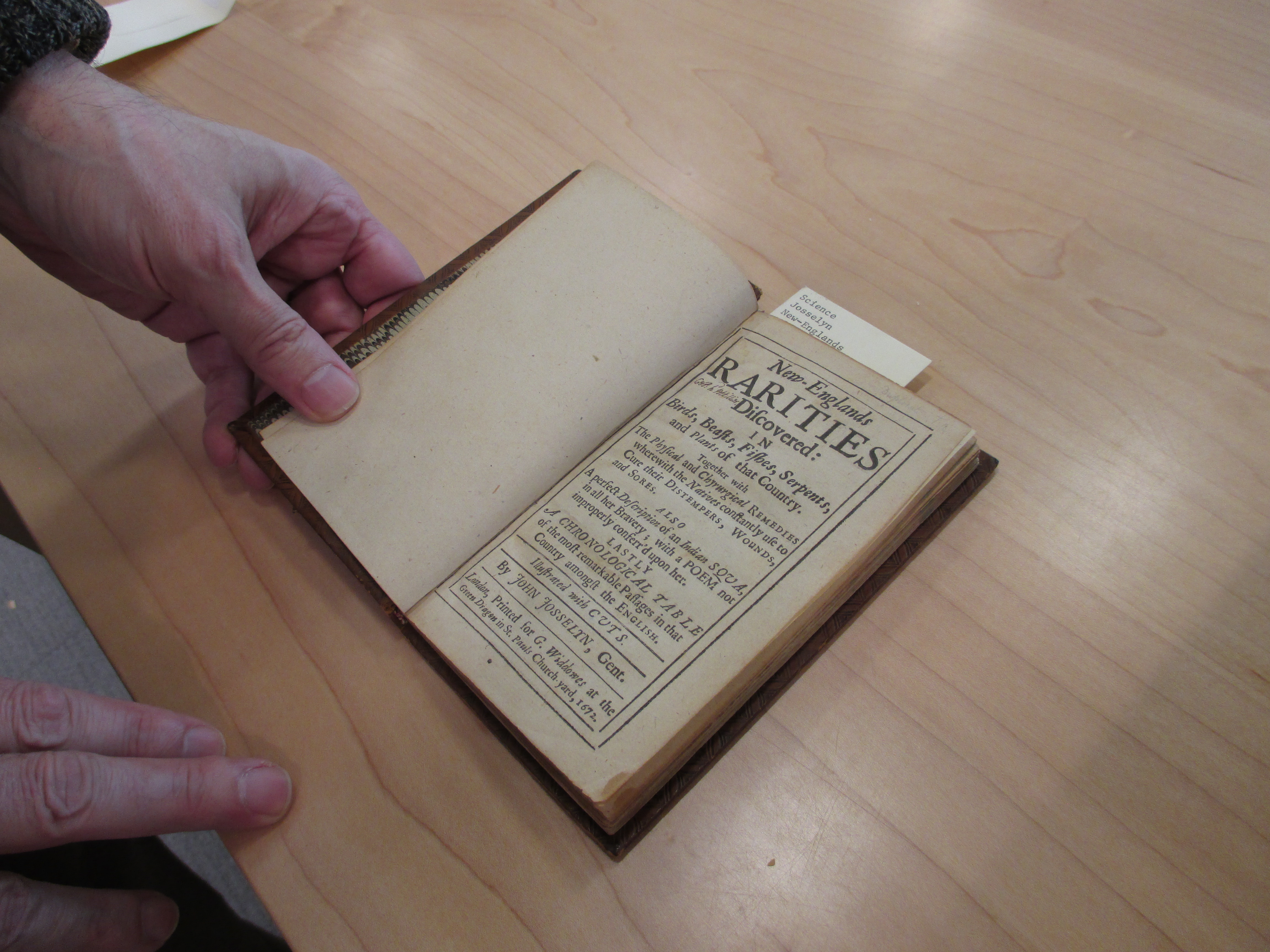By Elizabeth Jacobsen ’16
The first time I visited Chapin Library was for my Astronomy 102 class. All the notable books in the history of astronomy, from Euclid to Newton, were arranged on a square of tables. We admired the fascinating geometry of the sketches, recognizing some from our textbook. The books were a leathery tan, opened to illustrations of Galileo patiently listening to Copernicus and Ptolemy argue, a giant bull adorned with stars leaping across the sky, or Kepler’s attempts to chart the heavens on the musical staff. In the center of the room was a large book, its pages a couple of feet across. It detailed the elegant but inaccurate Earth-centered system, tracing the paths of the planets in pink and blue corkscrews around Earth. At last a lean man with a soft voice and owlish glasses said, “I’m Wayne Hammond, curator here at the Chapin Library.” And in a few more soft words, he began to spin the tale of astronomy’s history, slowly orbiting the room and leaving a trail of facts floating in his wake.
Williams College’s Chapin Library is dedicated to rare books, manuals, and other special collections, with a focus on making these materials available to students. The collections contain books dating back to the 9th century and artifacts from the B.C. era. The library is designed to work with the students’ education, so the Chapin partners with the Astronomy, Math, and Biology departments to provide books from the disciplines’ histories, such as Audubon’s Birds of America, which is on display in the Chapin Library exhibition space.

As a science student, I did not expect to wander into the realm of history. Intrigued, I returned later to ask Hammond for more details. “Science and history are bound up together like anything else in the sphere of knowledge,” he explained. “Scientific advances or discoveries spark historic change, and events in history drive scientific change.”
Isaac Newton said of his discoveries, “If I have seen further, it is by standing on the shoulders of giants.” In other words, every scientific advance builds upon previous science, recorded through history. The rise of printing and papermaking led to the creation of millions of historical documents. Development of navigational technology enabled the expansion and integration of cultures and knowledge. And of course, the personal computer has changed how we record and share scientific advances in the present day.
“Every book tells a story,” Hammond said. He gently opened a brown leather volume—one of Lewis and Clark’s publications—and remarked on how science alters the preservation and understanding of history. “In history, evidence is everything.”
The history, he explained, is present not only in the text, but also in the physical books themselves. The imperfections of books give clues to their pasts. Foxing, or speckling that occurs on the edge of the page, happens when moisture in the paper interacts with iron. Leather stains on the paper indicate quality, so they can tell you the circumstances of the book’s publication. Bindings present problems such as red rot, where the binding turns to powder, or acid patterning. A historian has to understand the chemistry of salts and tanned leather deterioration to know how best to preserve an aging book.
New technology helps organize historical collections, and chemical treatments protect artifacts from acid and pollution. Every once in a while, science and technology not only help preserve collections, but also assist in new discoveries. For example, UV and infrared light can be used to bring out erased marks. The Hinman Collator, invented by a historian, is a device that can overlay manuscripts to more easily detect differences. Hammond has his own strategies for using new technology.
“What we used to do sometimes for letters that were faded was simply to photocopy them,” Hammond recalled. “This weekend I was looking at a manuscript, and it’s actually two people writing, and some is in pencil, and some is in green ink, and some is in red ink, and some of it is not as legible as it could be, so you take Photoshop, and you select a color and use filters, and you can bring those things out.”
After Hammond finished speaking, I wandered around the library and paused in front of a wide page that smelled almost of vanilla. I ran my finger gently over the thick paper (you can touch almost any of the Chapin’s books), admiring a diagram that showed planets orbits as nested shapes—a triangle inside a sphere, inside a cube, inside another sphere—all resting on a giant, astronomical pedestal like a globe. Today we have neat maps of the planets’ elliptical orbits, often with planetary distances known to within a mile. Science has changed much over the centuries, but it is still built on the firm foundation of the past.

